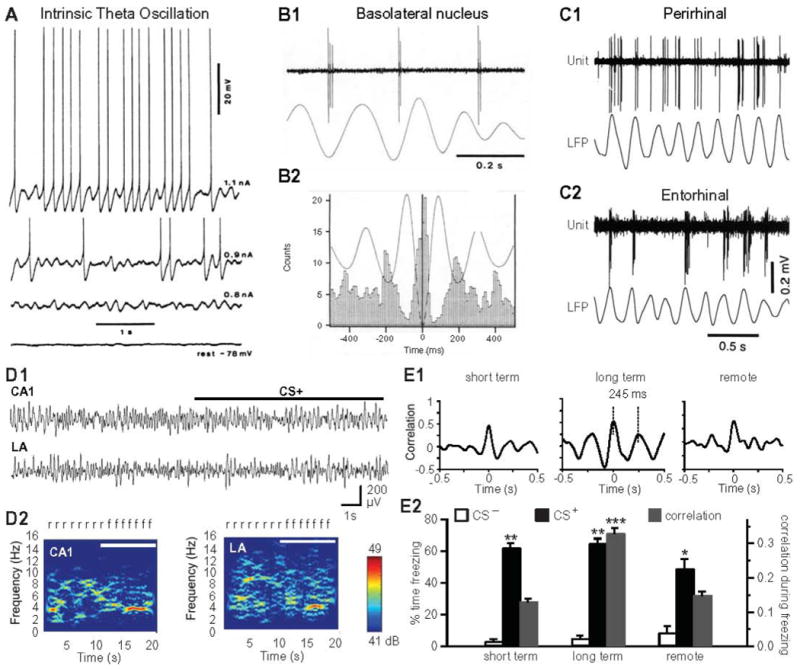Fig. 3.

Theta oscillations in the BLA. (A) LA neuron recorded intracellularly in vivo. Near threshold membrane depolarization by intracellular current injection (numbers on right) elicits intrinsic membrane potential oscillations in the theta frequency range. (B) Principal BLA neuron exhibit rhythmic firing at the theta frequency during paradoxical sleep. (B1) Unit activity (top) and LFP (bottom) recorded by the same microelectrode and obtained by high vs. low-pass digital filtering, respectively. (C) Perirhinal (C1) and entorhinal (C2) neurons fire rhythmically at the theta frequency. Traces obtained as in B. (D) Synchronized theta activity in LA and CA1 during retrieval of conditioned fear. LFP recordings (D1) and their color-coded power spectra (D2) demonstrate theta activity in both LA and CA1 during CS+-evoked freezing. White bar in D1 denotes CS+ presentation; f, freezing; r, risk-assessment behavior. (E) LA-CA1 activity during retrieval of conditioned fear at short-term, long-term and remote stages, recorded at 2 hours, 24 hours and 30 days after fear training, respectively. (E1) Crosscorrelograms indicate synchronized theta during long-term (middle; obtained from recordings in D), but not short-term or remote stages. (E2) Significant increase in CS+-evoked freezing (black bars; compared to CS-, white bars) at short, long-term and remote stages is accompanied by synchronized theta in LA-CA1 (grey bars) only at long-term memory stages. * P<0.01, ** P<0.001, ***P<0.0001. Data in D, E modified from (335).
